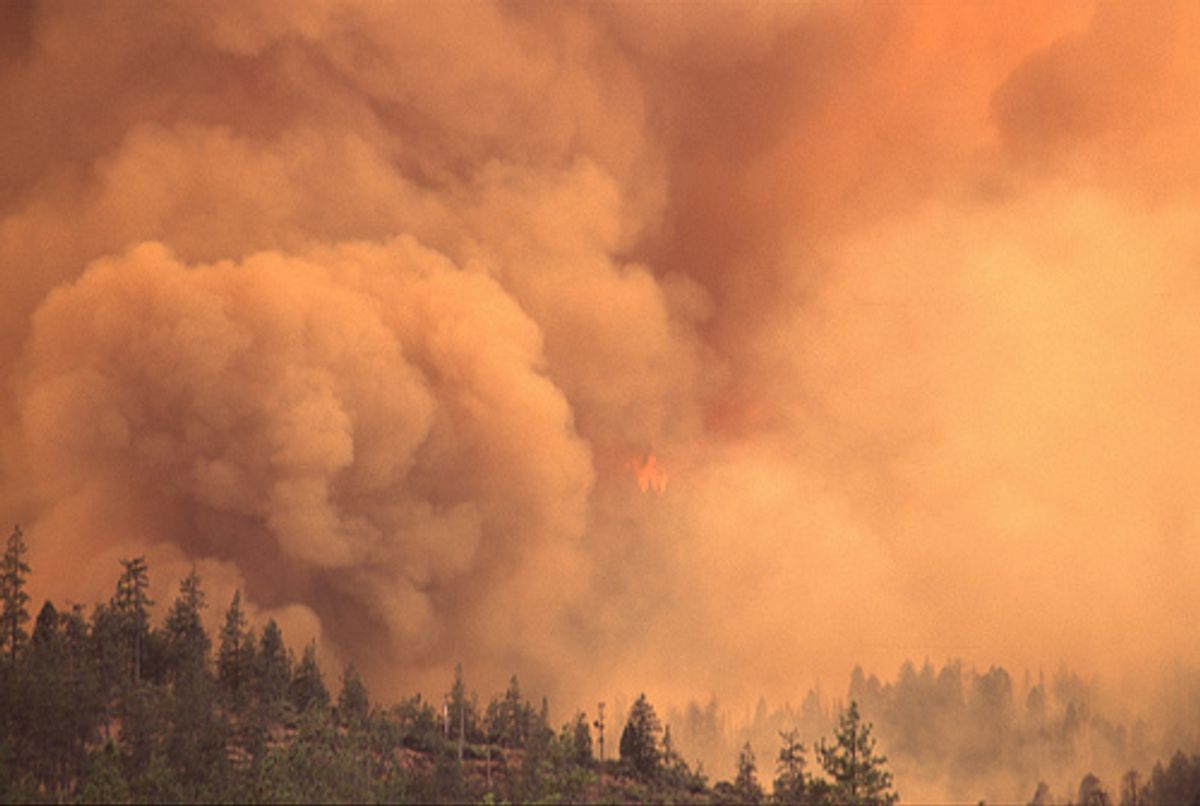Devastating in isolation, each new extreme weather event -- China's unrelenting heat wave, the drought that's sucking New Mexico dry, the increase in California wildfires -- can be understood as part of a larger pattern of carbon-fueled climate change.
And when unnaturally bad weather occurs, a new study has found, it may reduce the ecosystem's ability to absorb carbon, meaning more remains in the atmosphere. Publishing their results in the journal Nature, a team of international researchers calculates that about 11 billion fewer tons of carbon dioxide are absorbed each year than what would be expected if extreme weather events did not occur -- an amount equivalent to a third of annual global CO2 emissions.
The proposed disruption to the carbon cycle looks something like this:
[caption id="attachment_13448003" align="alignnone" width="453" caption="The many and varied consequences of extreme weather: droughts, heat waves, storms, heavy rain and extreme frost affect the carbon balance of forests, grasslands and agricultural land in different ways. The arrows pointing upward represent additional carbon dioxide in the atmosphere. The arrows pointing downward indicate that carbon dioxide is removed more slowly from the atmosphere. Orange arrows stand for short-term and purple arrows for long-term effects."] [/caption]
[/caption]
“We cannot answer how strong this vicious cycle is," Markus Reichstein, the study's lead author, told Climate Central. "Increasing carbon dioxide emissions cause a warming climate and, associated with that, increase the intensity of extreme events." The researchers believe, though, that extreme drought, which kills off large areas of plants and trees, has the most significant effect.
The researchers weren't able to prove that this cycle is happening. They illustrated the different pieces they believe are in play using satellite images and data from carbon monitoring stations throughout the world. From that, Reichstein said, “This is the logical cycle that can be anticipated."



Shares